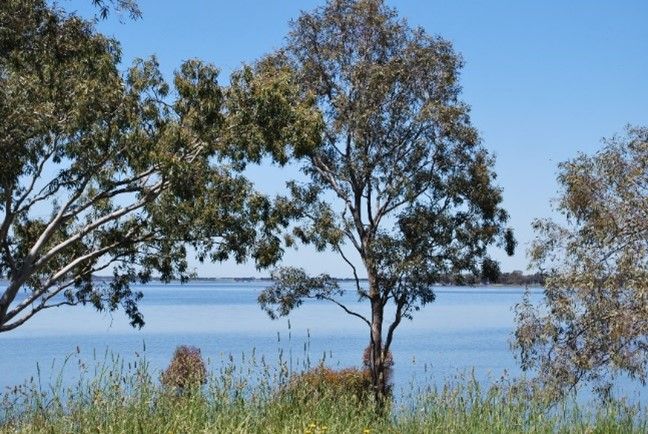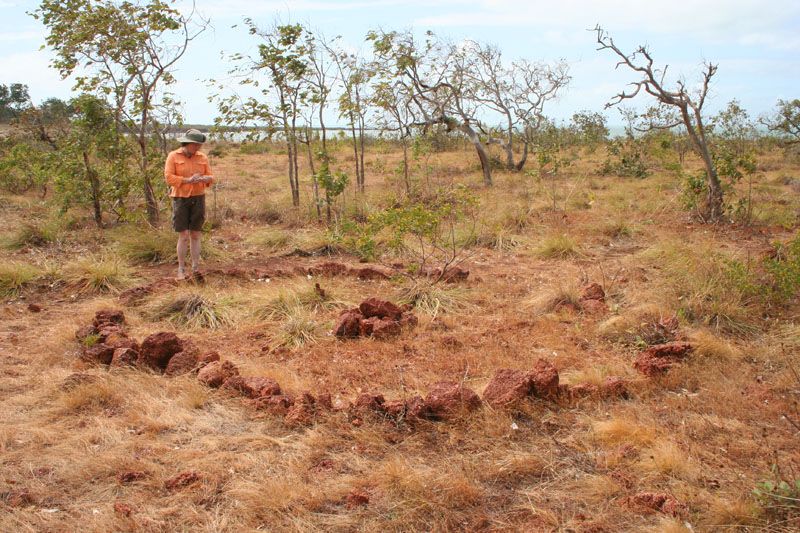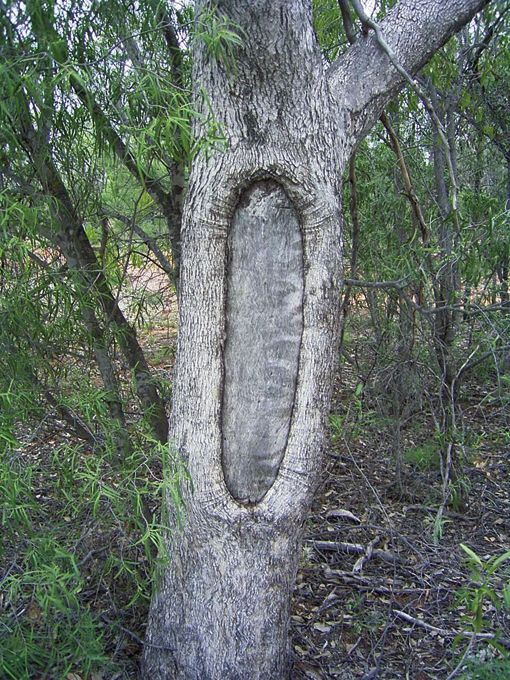Home/Curriculum resources/Reading and navigating through songlines/Case Study 3: Dampier Rock Art Precinct, Western Australia
Learning Areas:
English, Humanities and Social Sciences, Mathematics, The Arts
Year levels:
Level 3, Level 4

Case Study 3: Dampier Rock Art Precinct, Western Australia
This case study is a part of the Reading and navigating through songlines resource.
Pilbara Billabong. Photographer: Marius Fenger. Source: Wikimedia Commons. Used under licence: CC BY-SA 4.0.

Case Study 3: Dampier Rock Art Precinct
The Dampier Rock Art Precinct is located in the Dampier Archipelago, it exists within Murujuga (Burrup Peninsula) on the north-western coast of Australia, about 1700 km north of Perth. It contains the world’s largest concentration of petroglyphs (carved stones) as well as Australia’s largest body of megalithic (large stones) stone arrangements, all shaped from the distinctive bright red rock granophyre.
This impressive creative output showcased within this region is the output of the Yaburarra, a sub-tribe of the Ngarluma, a mainland tribe that shared the important ceremonial sites on the island. Interestingly, both rock art and stone arrangements co-occur, meaning they may have served different purposes, or worked together in combination to achieve their intended purpose.
In Australia, there are few parallels for this level and extent of Aboriginal landscape shaping as is present at this location.
The stone arrangements here include standing stones, some of which may be “thalu sites” (meaning a place where ceremonies were carried out to manage the occurrence of natural resources, such as plants and animals) which hold special significance and were likely connected to totemic locations.
These stones were also used to indicate the location of fresh water, as well as other natural resources, the site of special events or places of spiritual significance.
What is being done to preserve and safeguard this site?
On 12 July 2025, the UNESCO World Heritage Committee (47th session, Paris) officially inscribed the Murujuga Cultural Landscape, including the Dampier Rock Art Precinct, on the World Heritage List, acknowledging its Outstanding Universal Value and the creative genius embodied in more than a million petroglyphs 0 . The listing crowns decades of advocacy by the Murujuga Aboriginal Corporation, Traditional Custodians and both the Western Australian and Australian governments 0 . An amendment led by Kenya and backed by multiple member states overrode an earlier recommendation to defer the bid because of concerns about acidic emissions from nearby industrial plants 0 . As a condition of inscription, Australia must keep rigorous, transparent monitoring of industrial impacts and report regularly to UNESCO 0 . World Heritage status provides stronger legal protection, global recognition and, potentially, a boost in culturally responsible tourism, while Traditional Custodians and environmental groups continue to press for stricter controls on future industrial expansion to safeguard the petroglyphs for generations to come.

Related case studies within this resources:
Case Study 1: Bunya Nut Festival, Queensland
The Bunya Nut Festival is an illustration of navigation for ceremony and social interaction.

Case Study 2: The Lake Bolac Stone Arrangement, Victoria
The Lake Bolac Stone Arrangement is an illustration of navigation for ceremony and social interaction.

Case Study 4: The Wurrwurrwuy Makassan Stone Pictures, Northern Territory
The Wurrwurrwuy Makassan Stone Pictures is an illustration of navigation for trade.

Case Study 5: Scar Tree at Heide Yingabeal, Victoria
The Scar Tree at Heide Yingabeal is an illustration of markers to support navigation.